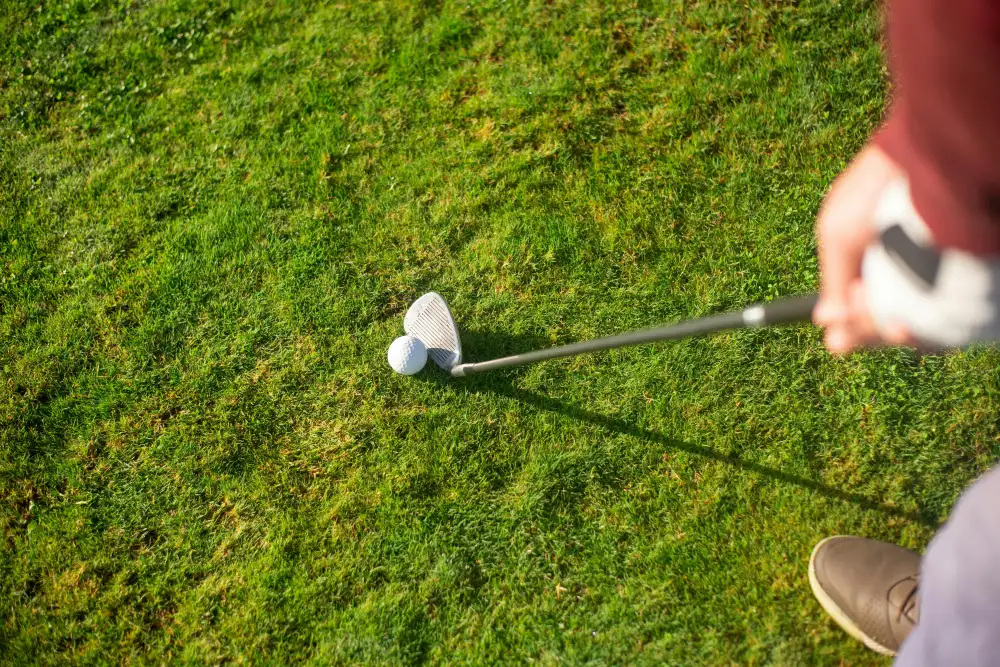Preventing and Treating Golf-Related Blisters: A Guide to Optimal Health on the Green

Golf is a popular sport enjoyed by millions worldwide, known for its leisurely pace and strategic gameplay. However, like any physical activity, golf can also pose health risks. One common issue that golfers often face is the development of blisters on their hands or feet. Blisters are fluid-filled pockets that form on the skin's surface due to friction or pressure. While they may seem like minor inconveniences, untreated blisters can lead to pain, discomfort, and even infection if not properly addressed. In this article, we will explore the causes of blisters in golf and provide valuable tips for prevention and treatment to ensure optimal health on the green. By understanding the factors contributing to blister formation and implementing preventive measures, golfers can enjoy their favorite sport without compromising their well-being.
Causes of Blisters in Golf
Blisters are a common occurrence in golf and can be caused by various factors. One of the main causes is friction, which happens when there is repetitive rubbing or pressure on the skin. This can occur due to improper grip on the club or incorrect swing technique.
Another cause of blisters in golf is wearing ill-fitting shoes or socks. Tight shoes can create pressure points and increase friction, leading to blisters. Similarly, wearing socks that are too thin or too thick can also contribute to blister formation.
Additionally, playing for extended periods without taking breaks can increase the likelihood of developing blisters. Continuous swinging and gripping of the club without giving your hands a chance to rest can lead to excessive friction and irritation.
It is important to note that blisters can also be caused by pre-existing foot conditions such as calluses or corns. These conditions can make the skin more vulnerable to friction and blister formation during golf.
Understanding these causes is crucial in preventing blisters while playing golf. By addressing these factors, golfers can minimize their risk of developing painful blisters and enjoy their game with optimal comfort and performance.
Importance of Proper Golf Grip and Technique
Proper golf grip and technique play a crucial role in preventing blisters while playing golf. The way you hold the club can greatly impact the pressure and friction exerted on your hands. A correct grip ensures that the club is securely held without excessive tension, reducing the risk of blisters.
To achieve a proper grip, place your left hand (for right-handed players) on the club with your thumb pointing down the shaft. Your right hand should then be placed below the left hand, with the thumb also pointing down. This overlapping grip provides stability and control during swings.
Additionally, maintaining a relaxed grip throughout your swing is essential. Gripping too tightly not only increases the chances of developing blisters but can also hinder your swing mechanics and overall performance.
In terms of technique, it's important to have a smooth and fluid swing motion. Swinging too forcefully or with jerky movements can lead to unnecessary friction and pressure on your hands, increasing blister formation. Practice proper body alignment, weight distribution, and follow-through to ensure an efficient swing that minimizes strain on your hands.
Remember, mastering proper golf grip and technique not only enhances your game but also protects your hands from painful blisters.
The Role of Golf Equipment in Preventing Blisters
The type and quality of golf equipment can play a significant role in preventing blisters while playing golf. One of the most important pieces of equipment is the golf glove. A well-fitted glove made from breathable material can provide a barrier between your hand and the club, reducing friction and minimizing the risk of blisters. Additionally, choosing the right grip size for your clubs is crucial. Grips that are too small or too large can cause unnecessary rubbing and increase the likelihood of developing blisters. It is also essential to regularly inspect your clubs for any rough edges or worn-out grips that could potentially cause irritation or blisters. By investing in high-quality equipment and ensuring proper maintenance, you can significantly reduce the risk of blisters and enjoy a more comfortable golfing experience.
Tips for Preventing Blisters while Playing Golf
1. Choose the right golf glove: Invest in a high-quality golf glove that fits properly and provides adequate padding to reduce friction and pressure on your hands.
2. Use grip aids: Consider using grip aids such as grip enhancers or gloves with built-in grip technology to improve your hold on the club, reducing the risk of blisters.
3. Maintain proper hand hygiene: Keep your hands clean and dry before playing golf. Moisture can increase friction, leading to blisters. Carry a towel or handkerchief to wipe off sweat during the game.
4. Break-in new equipment: If you have recently purchased new golf clubs or shoes, make sure to break them in gradually before playing a full round. This will help prevent any unnecessary rubbing or discomfort.
5. Adjust your grip: Experiment with different grips until you find one that feels comfortable and minimizes strain on your hands. Avoid gripping the club too tightly as it can cause blisters.
6. Take breaks and stretch: During long rounds of golf, take regular breaks to rest your hands and stretch your fingers and wrists. This will help alleviate any tension and reduce the risk of developing blisters.
7. Wear moisture-wicking socks: Invest in moisture-wicking socks that keep your feet dry by absorbing sweat. Wet feet are more prone to blisters, so wearing appropriate socks is crucial.
8. Properly fitted shoes: Ensure that your golf shoes fit well and provide ample support to avoid excessive rubbing or friction against your feet, which can lead to blisters.
By following these preventive measures, you can minimize the occurrence of blisters while enjoying a game of golf without compromising on your health and performance on the green.
Treatment and Care for Golf-Related Blisters
When it comes to treating golf-related blisters, there are a few key steps to follow. Firstly, it is important to clean the affected area with mild soap and warm water. Gently pat the blister dry with a clean towel, making sure not to burst it.
Next, apply an antibiotic ointment or cream to prevent infection. Cover the blister with a sterile adhesive bandage or dressing to protect it from further irritation. It is crucial to avoid popping or draining the blister as this can increase the risk of infection.
To promote healing, keep the blister clean and dry. If necessary, you can use padding or moleskin around the blistered area to reduce friction during golfing activities. Wearing well-fitting socks and shoes can also help prevent additional blisters from forming.
If the blister does burst on its own, gently clean it again and apply an antibiotic ointment. Allow it to air dry before covering with a sterile bandage. Change the bandage daily or whenever it becomes wet or dirty.
Remember, if you experience signs of infection such as increased pain, redness, swelling, pus discharge, or fever, seek medical attention promptly. A healthcare professional can provide appropriate treatment and advice based on your specific situation.
By following these treatment and care guidelines for golf-related blisters, you can ensure proper healing while minimizing discomfort and complications.
When to Seek Medical Attention for Golf-Related Blisters
When it comes to golf-related blisters, most cases can be treated at home with basic care and self-treatment methods. However, there are instances when seeking medical attention is necessary. If the blister becomes infected, with signs such as increased pain, redness, warmth, or pus drainage, it is crucial to consult a healthcare professional. Additionally, if you have diabetes or any other condition that affects your immune system or circulation, it is advisable to seek medical advice for proper evaluation and treatment of the blister. Remember, prompt medical attention can help prevent complications and ensure optimal healing.
In conclusion, blisters can be a common health issue for golfers, but with the right knowledge and precautions, they can be prevented and treated effectively. By understanding the causes of blisters in golf and the importance of proper grip and technique, you can minimize the risk of developing blisters. Additionally, investing in high-quality golf equipment that fits well and provides adequate support is crucial for preventing blisters. Following simple tips like wearing moisture-wicking socks, using blister prevention products, and taking breaks during long rounds can also help prevent blisters. In case you do develop a blister, it is important to treat it promptly with proper care to avoid infection. However, if a blister becomes infected or does not heal within a reasonable time frame, it is essential to seek medical attention. By prioritizing your health on the green and taking necessary precautions, you can enjoy playing golf without being hindered by painful blisters.
Published: 06. 02. 2024
Category: Health



